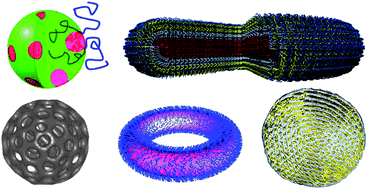New micellar morphologies from amphiphilic block copolymers: disks, toroids and bicontinuous micelles
Abstract
Amphiphilic AB and ABA

* Corresponding authors
a
Functional Materials Group, School of Physical Sciences, University of Kent, Canterbury, Kent, UK
E-mail:
S.J.Holder@kent.ac.uk
Tel: +44 (0)-1227-823547
b
Laboratory of Materials and Interface Chemistry and Soft Matter Cryo-TEM Research Unit, Eindhoven University of Technology, PO Box 513, Eindhoven, The Netherlands
E-mail:
N.Sommerdijk@tue.nl
Tel: +31 40 247 5870
Amphiphilic AB and ABA

 Please wait while we load your content...
Something went wrong. Try again?
Please wait while we load your content...
Something went wrong. Try again?
S. J. Holder and N. A. J. M. Sommerdijk, Polym. Chem., 2011, 2, 1018 DOI: 10.1039/C0PY00379D
To request permission to reproduce material from this article, please go to the Copyright Clearance Center request page.
If you are an author contributing to an RSC publication, you do not need to request permission provided correct acknowledgement is given.
If you are the author of this article, you do not need to request permission to reproduce figures and diagrams provided correct acknowledgement is given. If you want to reproduce the whole article in a third-party publication (excluding your thesis/dissertation for which permission is not required) please go to the Copyright Clearance Center request page.
Read more about how to correctly acknowledge RSC content.
 Fetching data from CrossRef.
Fetching data from CrossRef.
This may take some time to load.
Loading related content
